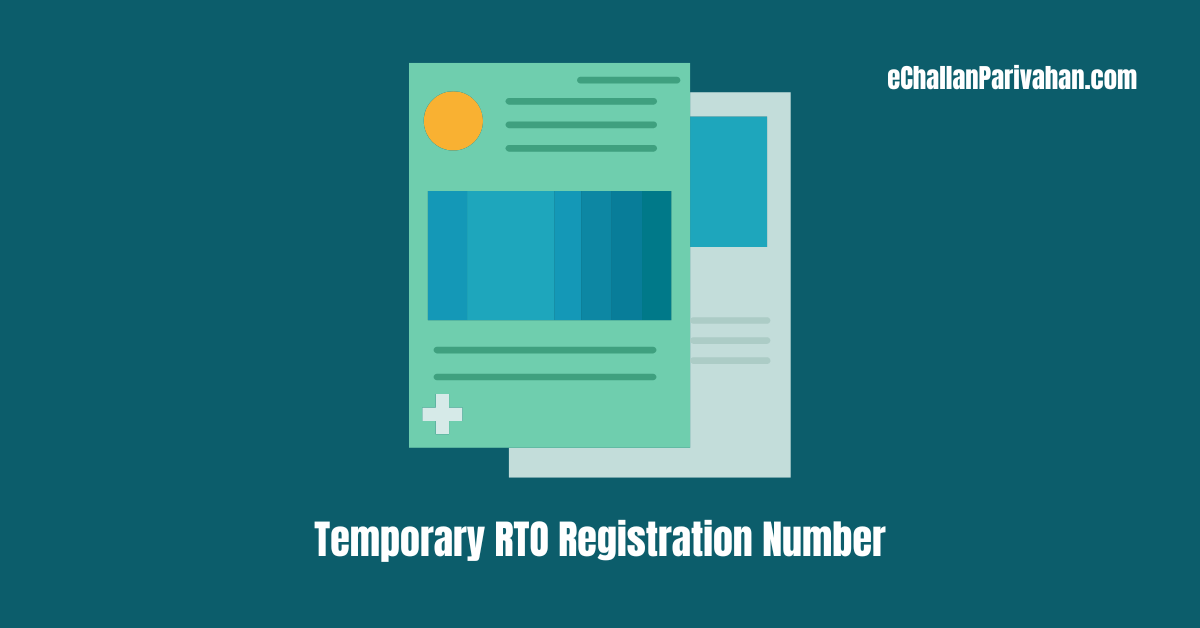 Temporary RTO Registration Number: Validity and Extension of Temporary Registration Number, Guidelines for Using a Temporary Registration Number, and Other Details.
Temporary RTO Registration Number: Validity and Extension of Temporary Registration Number, Guidelines for Using a Temporary Registration Number, and Other Details.
Purchasing a brand-new car is an exciting milestone, but before you can hit the road, there’s a crucial step you need to take – obtaining a temporary registration number.
This unique number is a legal requirement that allows you to drive your car from the showroom to your home while you wait for the permanent registration number to be issued by the Regional Transport Office (RTO).
In this article, we’ll get into the world of temporary RTO registration numbers, exploring their significance, the application process, and the necessary documents required.
What is a Temporary RTO Registration Number?
A temporary RTO registration number is a provisional identification number assigned to a brand-new car before it receives its permanent registration number from the RTO.
According to the Motor Vehicles Act, of 1988, every vehicle plying on public roads in India must possess a valid registration number.
Since the permanent registration process can take some time, a temporary number is issued to bridge the gap and allow car owners to legally drive their new vehicles until the permanent registration is completed.
Importance of Temporary Registration Number
Driving a car without a valid registration number is illegal and can result in penalties, including fines and potential legal consequences.
A temporary registration number serves as a legal identifier for your new car and ensures compliance with the Motor Vehicles Act.
It is a crucial step that should not be overlooked, as it protects you from potential legal issues and traffic violations.
Validity and Extension of Temporary Registration Number
A temporary registration number is typically valid for one month from the date of issuance. During this period, you are required to apply for the permanent registration number of your car with the concerned RTO.
If the permanent registration is not issued within the one-month validity period, you can apply for an extension of the temporary registration number.
The extension process involves submitting the necessary documents and paying the applicable fees to the RTO.
It is important to note that you can apply for a maximum of two extensions for the temporary registration number.
If the permanent registration is still not obtained after the second extension, you may be subject to penalties as per the Central Motor Vehicles Rules, 1989.
Obtaining a Temporary Registration Number
In most cases, the car dealer or showroom from where you purchased your vehicle will apply for the temporary registration number on your behalf. However, if they have not done so, you will need to apply for it yourself before taking the car home.
The process of obtaining a temporary registration number involves the following steps:
Download Form 20: Visit the official website of Parivahan Sewa (parivahan.gov.in) and download Form 20, which is the application form for obtaining a temporary registration number.
Fill out Form 20: Complete the form with all the required details, including your personal information and vehicle details.
Gather necessary documents: Collect the following documents:
- Form 21 (Vehicle Sale Certificate)
- Form 22 (Road Worthiness Certificate)
- Motor insurance certificate
- Pollution Under Control (PUC) certificate
- Address proof (Aadhaar Card, electricity bill, ration card, etc.)
- Copy of PAN Card or Form 60 and Form 61 (if PAN Card is not available)
Visit the RTO: Take the completed Form 20 and the required documents to the RTO holding jurisdiction over your residential area.
Pay the fees: Pay the applicable fees for obtaining the temporary registration number. These fees may vary from state to state, so it’s advisable to check with your local RTO for the exact amount.
Receive the temporary registration number: Once the payment is made and documents are verified, the RTO will issue a temporary registration number for your new car.
Also Read:
- E Challan Status
- Download Driving License Online
- How to Download Learner License Online?
- Learner License Test Online in India
- Pending E-Challan Blacklist
- Apply Online for Driving License in India
- Apply Online for Duplicate Driving License
Guidelines for Using a Temporary Registration Number
While using a car with a temporary registration number, it’s essential to follow specific guidelines to avoid legal complications. The Central Motor Vehicles Rules were amended in 2020 to enforce stricter guidelines related to car number plates, including temporary registration numbers.
Here are the guidelines you should follow:
Number plate display: Fix a temporary registration number plate at the front and back of your car.
Number plate format: All alphabets on the number plate should be in English, and numbers should be in Arabic numerals.
Number plate color: The background of the number plate should be yellow with red font color.
Number plate dimensions: The height, thickness, and space between two numbers/alphabets on the number plate should be 10 mm each.
Avoid handwritten plates: Do not paste a piece of paper with the temporary registration number written on it on your car.
No additional markings: Do not write anything (caste, name, etc.) except the registration number on the number plate.
Fees for Temporary Registration Number
The fees for obtaining a temporary registration number and applying for extensions vary from state to state.
- Temporary registration fee: Rs. 300 to Rs. 500
- Temporary registration certificate fee: Rs. 50 to Rs.100
- Number plate fee: Rs. 200 to Rs.300
Please note that these fees are subject to change, and it’s advisable to contact your local RTO for the most up-to-date information.
Temporary Registration: Documents Required
If you need to apply for an extension of your car’s temporary registration number, you will need to submit the following documents to the concerned RTO:
- Form 20( Application for registration of the vehicle)
- Form 21( Sale certificate for the vehicle)
- Valid Vehicle insurance certificate
- Pollution Under Control (PUC) certificate
- Sales invoice or a transfer certificate to show as ownership proof
- Vehicle owner’s ID proof, a driver’s license, PAN card, or Aadhaar card
- Utility bill or a bank statement for address proof
- Payment of fees for temporary registration
Additionally, you will need to specify the reason for requesting an extension and the desired time period for the extension.
Conclusion
Every car in India must be registered with an RTO as per the Motor Vehicles Act, 1988. While the permanent registration number is the ultimate goal, obtaining a temporary registration number is a crucial step that allows you to legally drive your new car from the showroom to your home.
By following the guidelines outlined in this guide, you can navigate the process smoothly and ensure compliance with the law. Remember, failing to obtain a temporary registration number or driving without a valid registration number can result in legal consequences and penalties.







